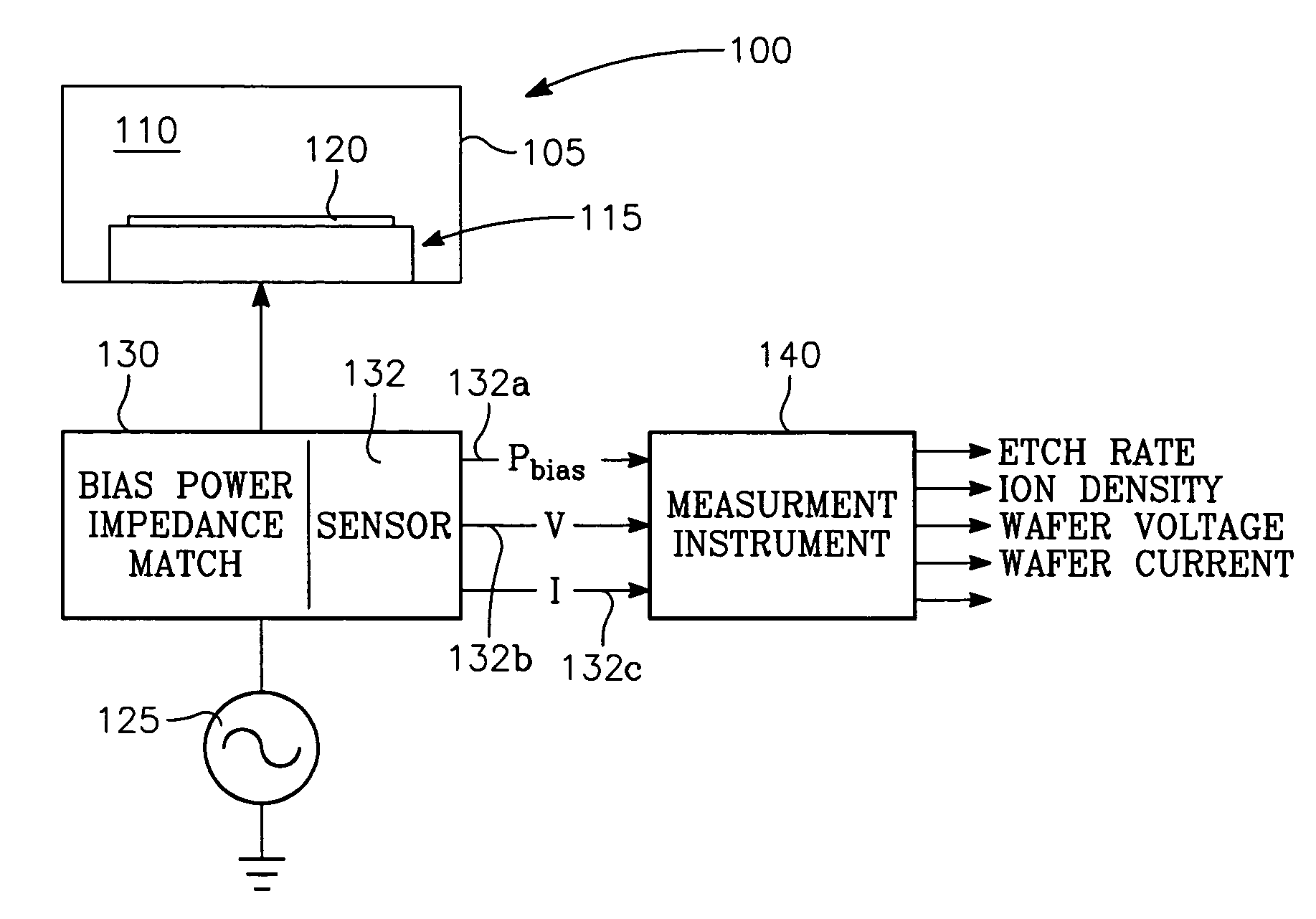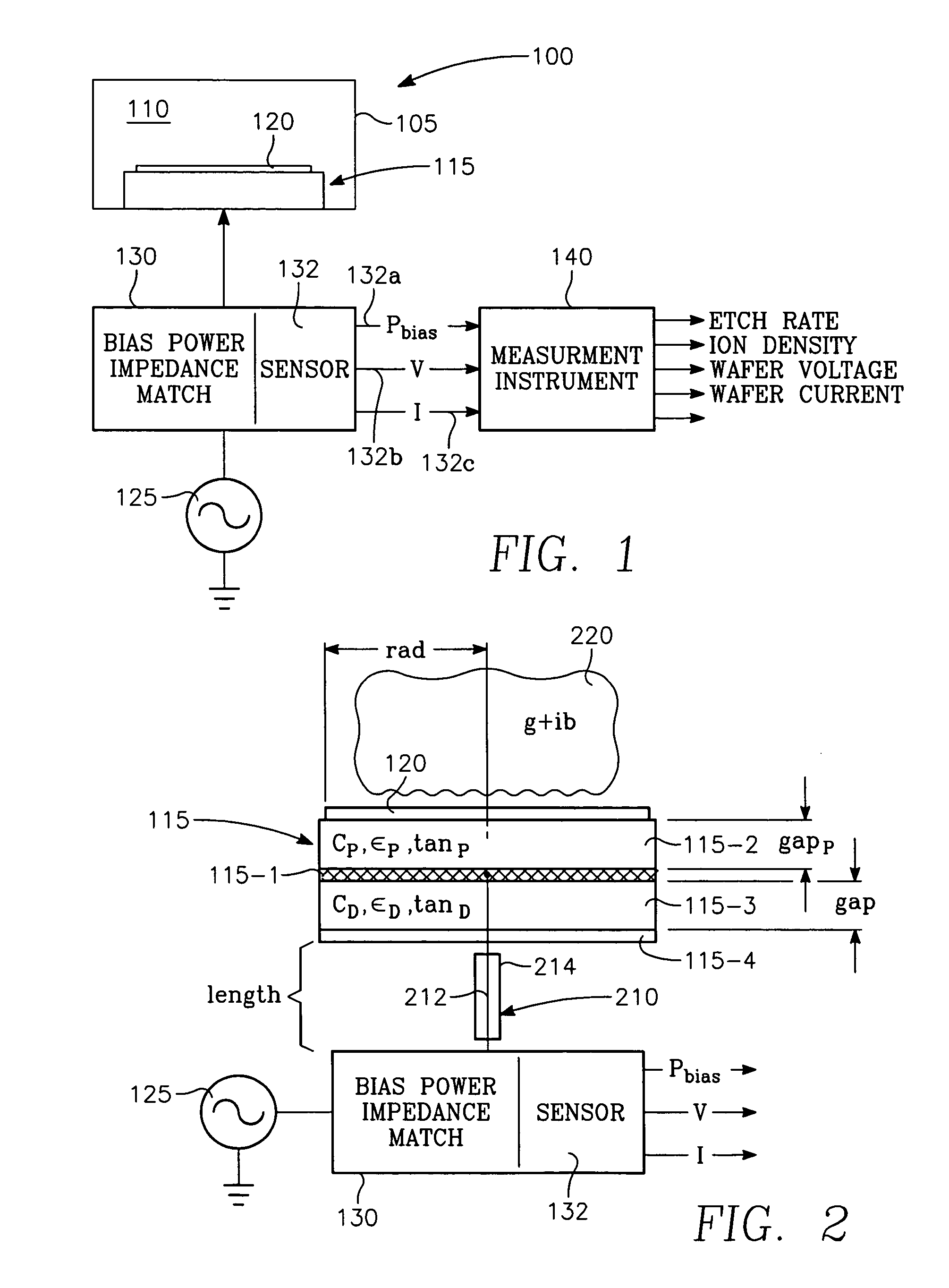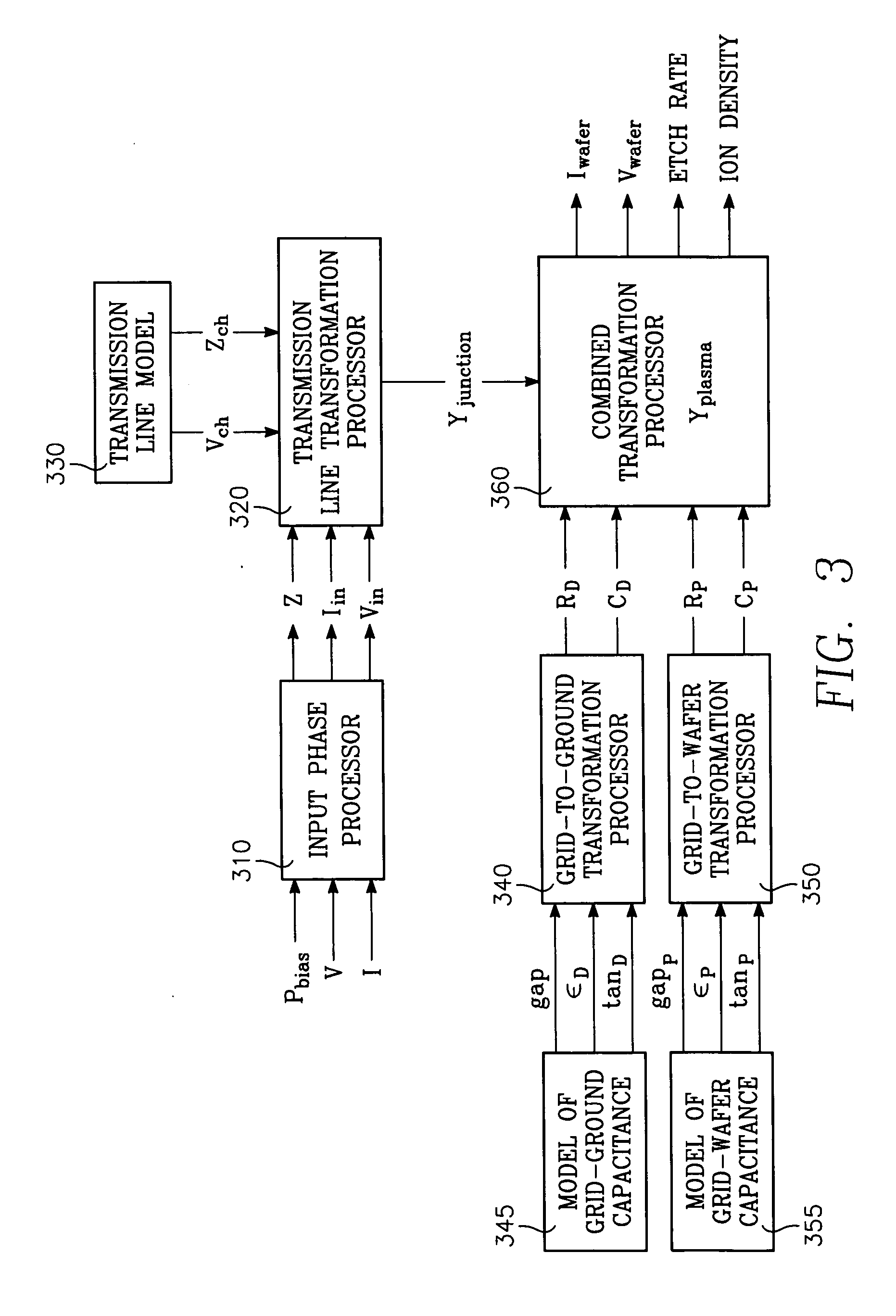Method of operating a plasma reactor chamber with respect to two plasma parameters selected from a group comprising ion density, wafer voltage, etch rate and wafer current, by controlling chamber parameters of source power and bias power
a plasma reactor and plasma parameter technology, applied in the direction of instruments, fluid pressure measurement, vacuum gauges, etc., can solve the problems of high accuracy of the techniques of measuring etch rate, ion density, wafer voltage and wafer current, and the inability to accurately measure these parameters in “real time”
- Summary
- Abstract
- Description
- Claims
- Application Information
AI Technical Summary
Benefits of technology
Problems solved by technology
Method used
Image
Examples
Embodiment Construction
Introduction
[0027] The present description pertains to a plasma reactor having a plasma source power applicator (such as an overhead electrode or antenna) in which plasma bias power is applied to the wafer through the wafer support pedestal. I have discovered a measurement instrument (described below) that is the first one known to instantaneously and accurately measure wafer voltage, wafer current, ion density and etch rate. The measurement instrument uses only conventional electrical sensors at the bias power input that sense voltage, current and power at the output of an impedance match device coupled to the wafer support pedestal. The measurement instrument is therefore non-invasive of the plasma etch process occurring within the reactor chamber in addition to being accurate. The degree of accuracy is surprising, surpassing even the best known instruments and measurement techniques currently in use.
[0028] I have invented a plasma reactor having a feedback controller employing ...
PUM
| Property | Measurement | Unit |
|---|---|---|
| voltage | aaaaa | aaaaa |
| bias power | aaaaa | aaaaa |
| bias power | aaaaa | aaaaa |
Abstract
Description
Claims
Application Information
 Login to View More
Login to View More - R&D
- Intellectual Property
- Life Sciences
- Materials
- Tech Scout
- Unparalleled Data Quality
- Higher Quality Content
- 60% Fewer Hallucinations
Browse by: Latest US Patents, China's latest patents, Technical Efficacy Thesaurus, Application Domain, Technology Topic, Popular Technical Reports.
© 2025 PatSnap. All rights reserved.Legal|Privacy policy|Modern Slavery Act Transparency Statement|Sitemap|About US| Contact US: help@patsnap.com



